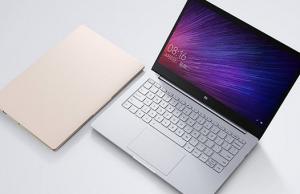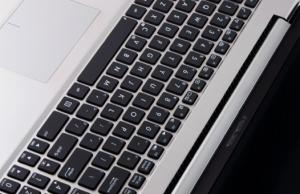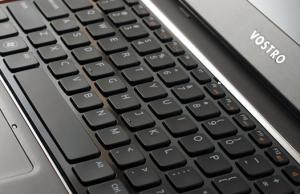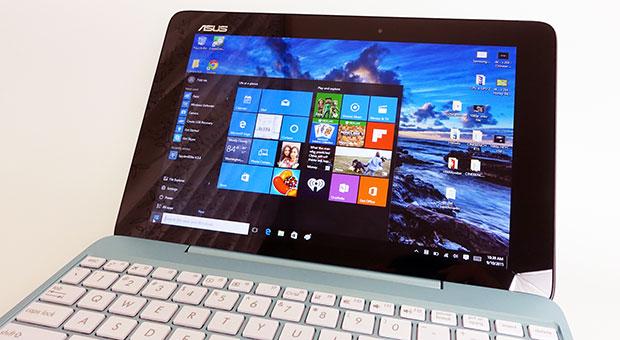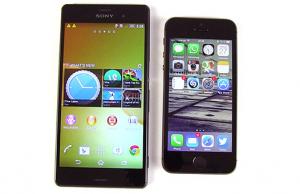Unlike the other companies trying to get it right with Ultrabooks, Toshiba had some previous experience before releasing the Z830. A couple of years back, the company released the Portege R500, an Ultrabook avant la lettre in all aspects, as it had a 0.77 inch profile and weighed around 2.4 pounds. Audaciously enough, the R500 also had an optical drive, a feature Ultrabooks completely ignore, as it’s considered obsolete- there are better ways of storing and procuring data and it’s just an unnecessary extra load, that will also deplete the battery faster.
While the Z830 doesn’t have an optical drive as well, it has something neither of the other Ultrabooks has for the time being and that is a fully featured set of ports. This is not random, mind, as the Portege Z830 is first and foremost a business oriented laptop, may it be an Ultrabook for the matter.
Still, a proper productivity machine must have all the features needed to function properly and the Z830 doesn’t cut corners- except those weird hinges underneath the display.
You’d think that any extra feature on an Ultrabook, especially a hardware one, might corner the already feeble battery, but I was pleased to see that the Z830 also has one of the best batteries in the current lineup of Ultrabooks- more on that later.
So where does the Z830 stand in comparison with the other entries in this hyped new niche? Stick around and find out from our review.
Specs
First of all, let’s see just what Toshiba was able to squeeze in the 0.7 inch body.
• CPU: Intel Core i5- 2557M, 1.7 GHZ
• System memory: 4 GB DDR3 RAM
• Storage: 128 GB SSD
• Video: Intel HD Graphics 3000
• Operating System: Microsoft Windows 7 Home Premium
• Display: 13.3 inch LCD, 1366 x 768 resolution
• Connectivity: WiFi N, Bluetooth, Ethernet
• Ports: USB 3.0, USB 2.0, SD card reader, audio jack, VGA, HDMI
• Battery life: ~ 8 hours
• Size: 316 x 227 x 16 mm
• Weight: 1.09 kg
While the Core i5 version is the most common one, so to say, the Portege Z830 can be equipped with a Core i3 or i7 chip as well, but only in some territories. The fact that there’s no 3G option available is kind of a downturn, especially for business users, but the fact that there are lots of full sized ports kind of makes up for it, at least in my books.
Design and build
There’s a fine line to cross between somber and dull and Toshiba’s design team might need a night on the town and freshen up their ideas. The honeycomb themed lid, made out of magnesium, felt sturdy to me and trying to bend it didn’t affect its shape one bit. While the machine is strong on the build quality side, it’s less so when it comes to looks.
In short, it’s a kind of bland and I felt like looking at a piece of nicely brushed cardboard. The base is even sturdier and overall, for an Ultrabook, the z830 feels very solid, but it’s not as inspiring in terms of looks like the MacBook Air or Zenbook. Don’t get me wrong, this is not an ugly laptop. Actually, it will fit great in an office, I think, where somber looks and a certain conservatism is much more appreciated than the extravaganza of other Ultrabooks.
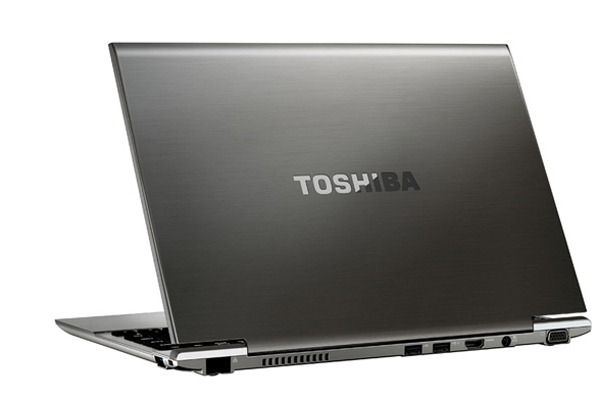
The dull finish makes the Portege Z830 less of an envy looks magnet
The build quality is indeed striking and the machine felt great to hold- I actually flexed my arm a couple of times while holding it to see if it slides out of my hand- didn’t happen. As for the two sawed off corners under the display- they sure make the z830 look different and give it a fragile touch that you can associate with some sort of techno fetish for slimness, something Ultrabook have built in.
Also, it makes the display seem like it’s a little higher than it actually is and promote the device as more comfy than it is. Most of the ports on the z830 are on the back, under the hinge of the screen. The sides are a little less populated and from a side the laptop seems like nicely finished slim… matter rather than the bulky, functionally designed cases of computers.
On the right, there’s the Kensington lock and a USB 3.0 port, while on the left you’ll find audio jacks. In the back, you get the full sized HDMI, VGA, Ethernet ports, as well as two USB 2.0 ports, of which one uses Toshiba’s sleep and charge technology.

Ports galore!
Keyboard and track pad
The first feeling I had when I saw the keyboard on the z830 is that someone tried to fit Mahjong tiles into a piece of thin alloy. The keys have almost no travel and feel like little squares drawn on the place where an actual key should be. The keyboard is stretched on the entire surface of the base, so keys are reasonably large and there’s enough space between keys to avoid typos.
As expected, the keyboard is silent and even typing hectically won’t bother someone sitting next to you. Ah, yes, the backlit part. The z830 has a backlit keyboard which adapts to the light conditions in the room, so you won’t have to set it yourself- I mean, of course you’ll have to, as the preset slider is not for all tastes, but at least Toshiba meant well.
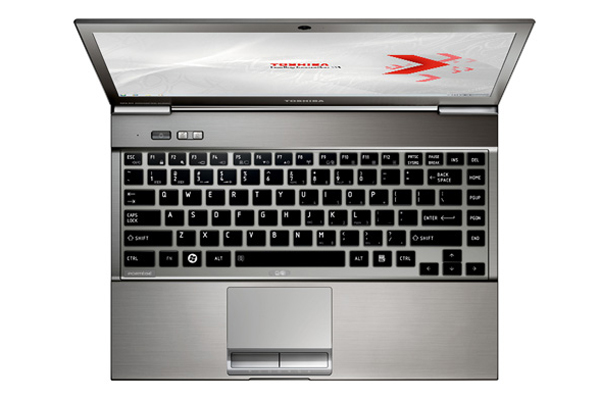
The backlit keyboard is also very silent, with keys having little travel
The touch pad, measuring 1.75 x 3.3 inches, is very precise and doesn’t lag. While the surface feels smooth and it’s very touch friendly, it has the disadvantage of reaching the edge of the designated area quite quickly. Not once I bumped into the edges and had to backtrack, something that could be quite frustrating on the long term. As for the buttons, they are separated from the touch surface and have a metallic finish. While they’re more prone to get dirty than plastic buttons, they feel great when pressed.
Display
Like most other Ultrabooks under a grand, the z830 comes with a display with a 1366 x 768 resolution, a setup that’s clearly pre-Ultrabook, as many laptops, big and small, have that resolution. I wasn’t very worried about the pixel commandos- their number suffice for decent browsing and even video playback, but the actual quality of the matte screen could be definitely better.
Viewing angles are problematic, and you’ll need to mathematically move around the screen to find a good angle, except the classic direct angle, which is pretty decent. But we’re all fallen angels when it comes to laptop display expectations and we’ll probably find a fit with this one, and keep having dirty dreams about displays that don’t lose color consistency when looked from a side.
Performance
With a Core i5 processor running at 1.7 GHZ, but able to bleed out to 2.3 GHZ with TurboBoost, and 4 GB of RAM, the z830 offers mainstream performance for an Ultrabook. That means that you’ll be able to run apps, even pretentious ones, like video editors, without too much of a problem. Really, for a day to day computer, the z830 works very well.
You wake up to a mix of checking emails and reading news? Check. Followed by a couple of hours of more emailing, some productivity apps, music players, Skyping etc? Check. Rounding it off with some TV shows or even HD movies? Also check. As for gaming, don’t expect too much, as there’s only the Intel HD 3000 to count on, which means that only older titles will work without stuttering.
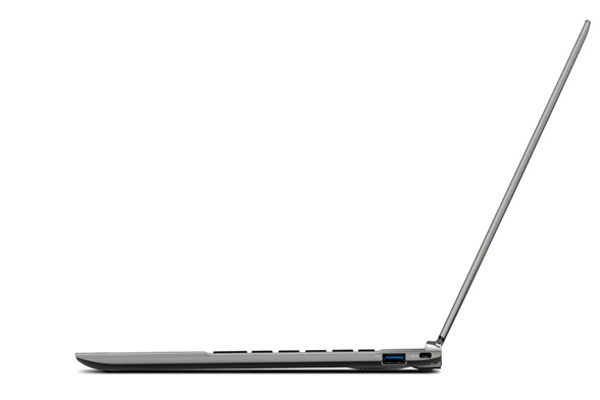
As slim as the other Ultrabooks, the z830 delivers decent to top notch performance, depending on what you use it for
It’s worth noticing that the SSD on the z830 is slower than the one on other Ultrabooks, like the Ux31. This won’t bother you in normal day use, but you might notice longer booting times and only if comparing it with other Ultrabooks.
File transfers might be slower than on top notch Ultrabooks or SSD only machines, but you’re much more covered than in the case of using an HDD. Also, keep in mind that overworking the CPU will make the fan, positioned on the bottom of the machine, go off quite noisily for an Ultrabook, but comfortably within tolerable limits.
Battery life
The Portege Z830’s battery is one of the best in the category, having a lifespan of around 7 hours when used for normal apps, like running browsers, the occasional video playback, some productivity apps and more. Pcpro.co.uk squeezed out over 8 hours of use using a light pack of apps, but keeping it light with it means not taking advantage of the good hardware. Anyway, the Z830 matches in terms of battery life the Zenbook, but it’s still somewhat less sustainable than the MacBook Pro.
Prices and availability
This ultrabook is available in the US for $799 at Best Buy, which gets you the Core i3 version, while outside of Best Buy, the Core i5 version goes for around 900 bucks. Still, it’s one of the best prices you’ll get for it, as in the UK the Core i5 goes for 1184 pounds– really, Toshiba should get a reality check, as the UK Amazon page says that the normal price of the ultrabook is of about 2200 pounds. I laughed so hard.
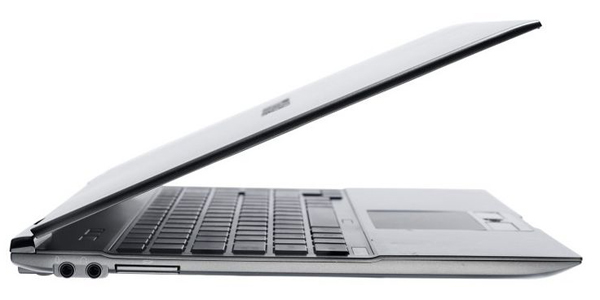
The Portege z830 is the best Ultrabook to go for now, especially if you're on a budget
Final thoughts
Ultrabooks are still imperfect machines, but the Portege Z830 really strives to be as less mediocre as possible. With a backlit keyboard, ultra slim body and impressive selection of ports, the Z830 is one of the best equipped ultrabooks out there. Sure, it doesn’t have the best hardware from the lot, but will still deliver a solid experience, while the battery life is nothing short of satisfying.
The design is not all that great and you don’t have to be a genius to notice that, overall, a Zenbook or a MacBook Air look consistently better and maybe get better scores in synthetic tests as well. But the Z830 has an asking price significantly lower than the competition, and the difference in bucks is more relevant than some quirks Asus or Apple might stick on their Ultrabooks.
In terms of what’s essential and important on a laptop and an ultrabook in particular, the Z830 is bang on the buck and sets a trend we hope other players will follow- that of the no nonsense, affordable ultrabook.

